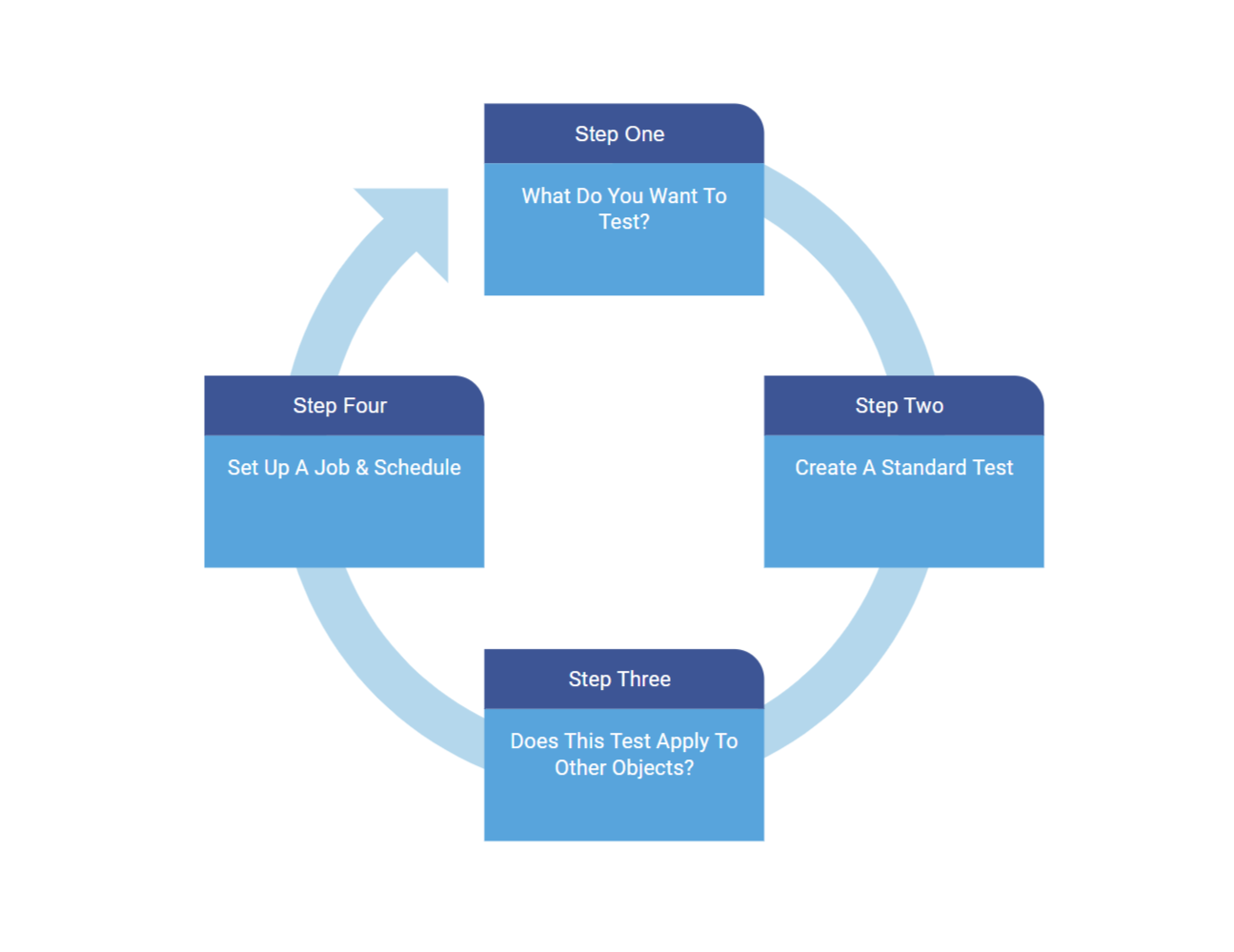What To Know
Testing in Validatar is an iterative process aimed at constructing a comprehensive suite of tests. If you're new to Validatar and just getting started, here's what you need to know:
1. Standard Tests are the best place to start
- Focus on Target Testing Object: Standard tests allow you to concentrate on a specific testing object at a time. This focused approach helps you gain a deep understanding of the target component and its associated testing requirements.
- Familiarization with Testing Components: Standard tests provide an excellent opportunity to become familiar with the various components necessary for executing successful tests. This includes understanding the required inputs, expected outputs, and any specific result configurations or dependencies involved.
- Easy Template Test Conversion: As you progress and become more experienced with automation, standard tests can be effortlessly transformed into template tests. Templates offer a reusable framework that streamlines the creation and execution of similar tests, saving time and effort in the long run.
2. Template Tests are the long-term goal
- Automation Driving Force: Template tests are a driving force behind automation in Validatar. By creating template tests, you can significantly expedite the process of test creation and execution.
- Streamlined Testing for Multiple Objects: Template tests empower you to effortlessly create identical tests that can be applied to multiple objects simultaneously. This streamlined approach saves time and effort by eliminating the need to create individual tests for each object.
- Consistency and Standardization: Template tests ensure consistency and standardization across your testing practices. By using the same template for similar tests, you can maintain uniformity in test structure, inputs, outputs, and result configurations.
- Scalability and Maintenance: As your testing requirements expand and evolve, template tests provide a scalable solution. They can be easily modified and updated to accommodate changes in object configurations or testing criteria, allowing for efficient test maintenance.
- Reusability and Efficiency: By leveraging template tests, you can capitalize on the reusability of test designs and reduce redundancy. Modifications made to the template automatically propagate to all tests derived from it, enhancing efficiency and reducing the effort required for test management.
3. The more information you document in Validatar, the stronger your testing becomes
- Enhanced Test Definition: Additional metadata and information captured in the Data Catalog enable you to further define and filter the tests you create.
- User-Friendly Approach: By leveraging business knowledge, the inclusion of additional metadata makes Validatar more accessible and user-friendly for business users.
- Utilizing Existing Information: Additional metadata can be captured through queries or files, allowing you to utilize information that is likely already stored, optimizing the testing process.
4. Scheduling Jobs turns your organization into an automated testing shop
- Test Execution: Scheduled jobs in Validatar allow you to run your current test lists automatically at specified intervals
- Dynamic Test Creation: With jobs, you can generate new tests or delete existing ones based on changes to your data source's metadata
- Automation Empowerment: By leveraging scheduled jobs, your organization can embrace automation and streamline the testing process, reducing manual effort and improving efficiency.
What To Do

- Identify something specific you want to test
- Create a standard test
- What object am I testing?
- What am I comparing that to?
- How is Success/Failure defined?
- Run the test.
- Does this test concept apply to other objects? If so:
- Document what parts of the test need to change for the other objects
- Setup your data catalog with metadata that captures necessary details
- Create a template test
- Parameterize the queries/rules using metadata tags
- Setup metadata filters or query or file to define which child tests are created.
- Materialize child tests
- Run child tests
- Add your test to a job and set up a schedule
- Repeat